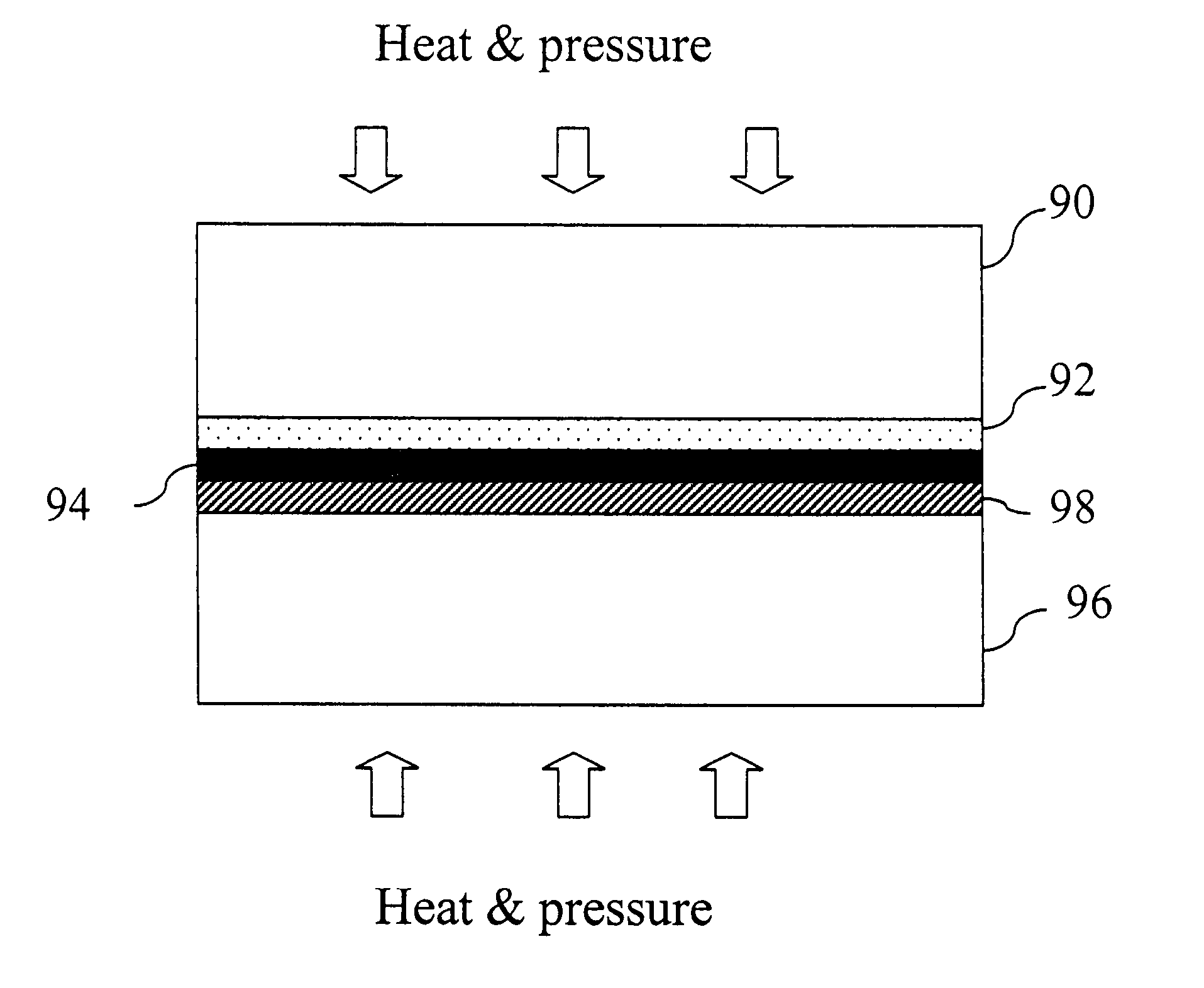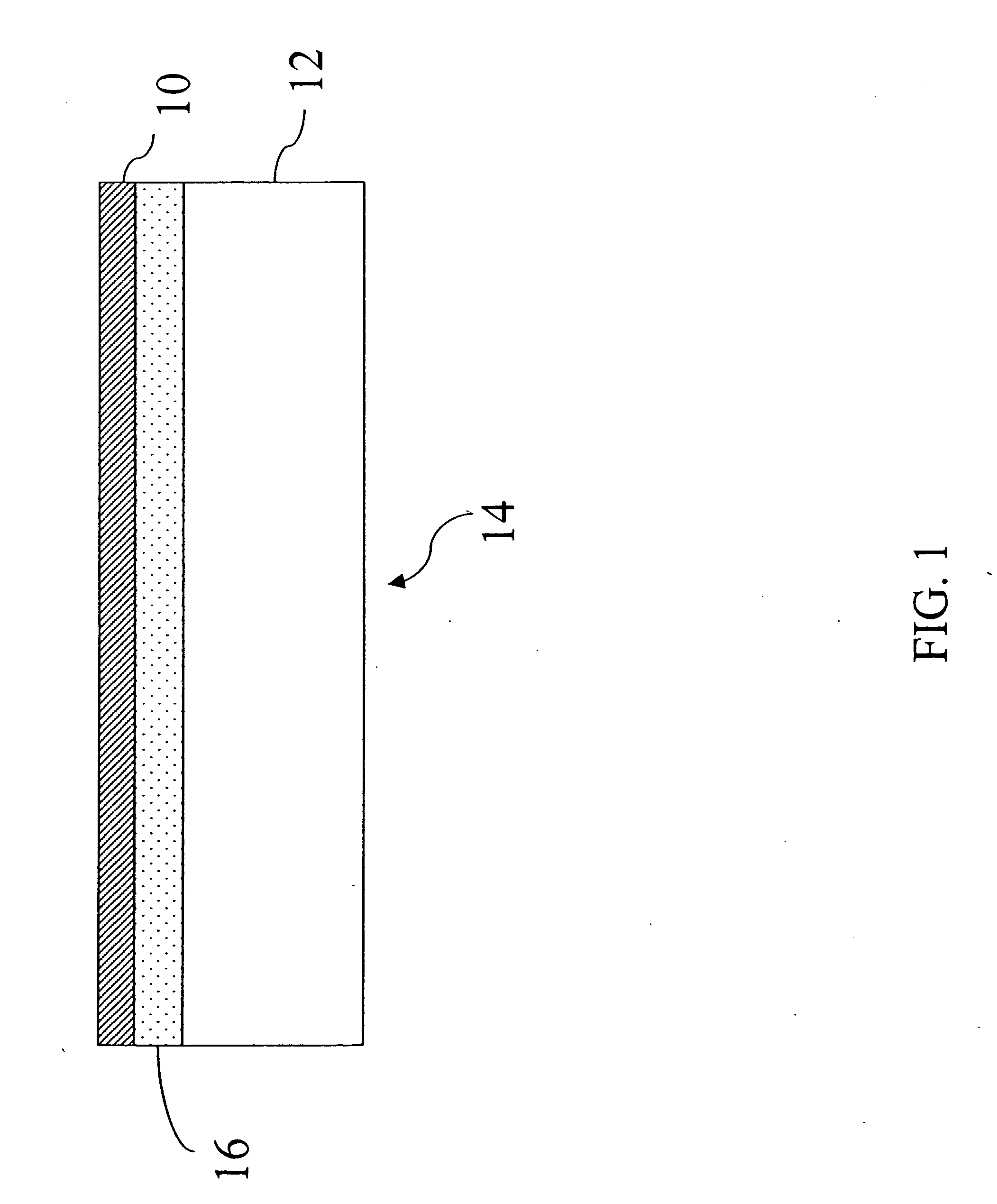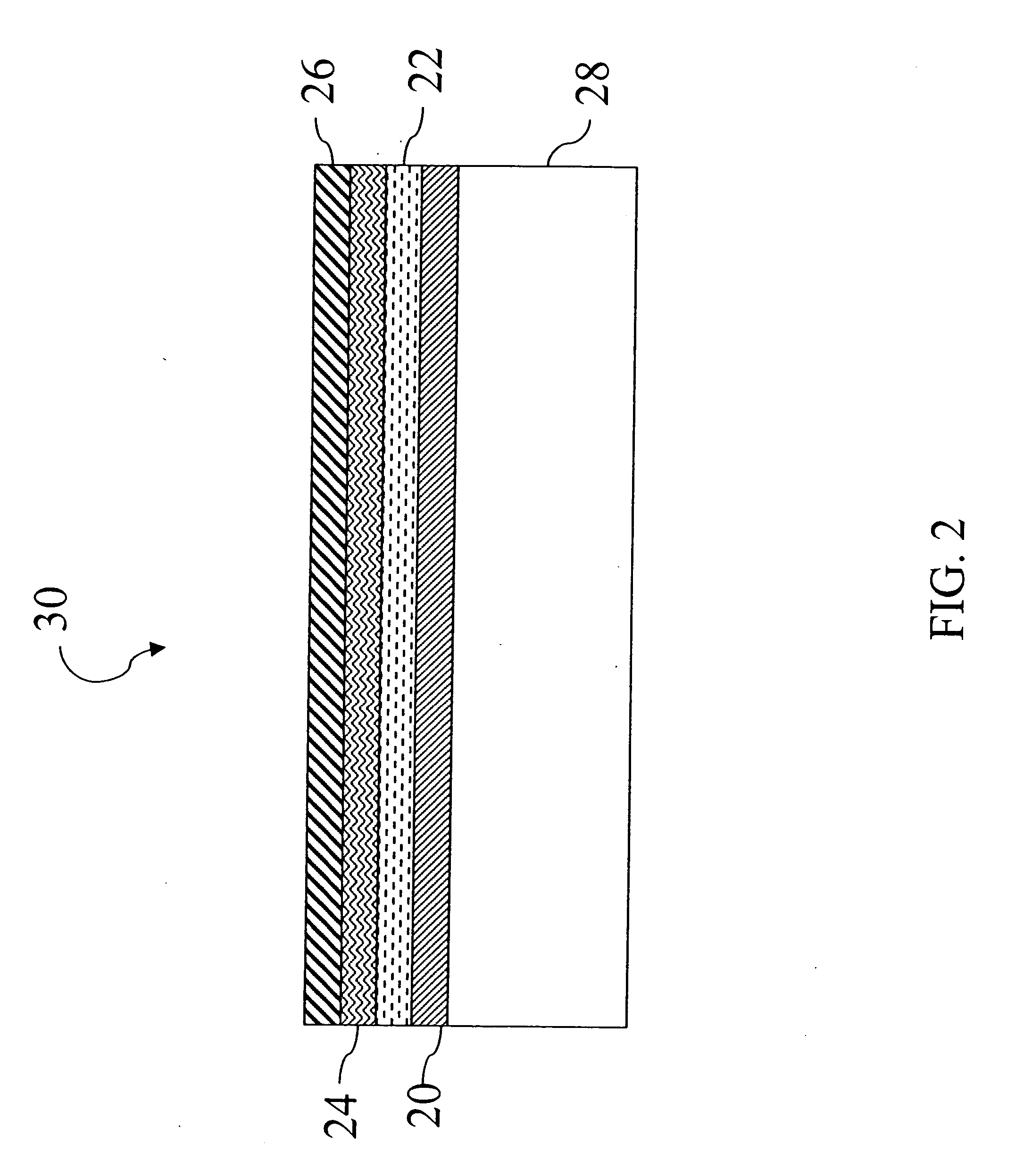Polymeric conductor donor and transfer method
- Summary
- Abstract
- Description
- Claims
- Application Information
AI Technical Summary
Benefits of technology
Problems solved by technology
Method used
Image
Examples
examples
[0156] Donor Laminates
[0157] The donor laminates used in the following examples comprised of, a substrate, a silocone layer and a conductive coating, in the aforementioned order.
[0158] The substrate used was either polyethylene terephthalate (PET) or triacetylcellulose (TAC).
[0159] The silicone layer was either a solvent coated 3-glycidoxy-propyltrimethoxysilane layer (RL-1) or a thermally cured silicone layer commercially available from Rexam Corporation (RL-2).
[0160] The conductive coating was applied onto the silocone layer from a coating composition comprising the following ingredients: [0161] (a) Baytron P HC: aqueous dispersion of electronically conductive polythiophene and polyanion, namely, poly(3,4-ethylene dioxythiophene styrene sulfonate), supplied by H. C. Starck; [0162] (b) Olin 10G: nonionic surfactant supplied by Olin Chemicals; [0163] (c) N-methylpyrrolidone: conductivity enhancing agent supplied by Acros; [0164] (d) diethylene glycol: conductivity enhancing agen...
PUM
| Property | Measurement | Unit |
|---|---|---|
| Temperature | aaaaa | aaaaa |
| Linear density | aaaaa | aaaaa |
| Linear density | aaaaa | aaaaa |
Abstract
Description
Claims
Application Information
 Login to View More
Login to View More - R&D
- Intellectual Property
- Life Sciences
- Materials
- Tech Scout
- Unparalleled Data Quality
- Higher Quality Content
- 60% Fewer Hallucinations
Browse by: Latest US Patents, China's latest patents, Technical Efficacy Thesaurus, Application Domain, Technology Topic, Popular Technical Reports.
© 2025 PatSnap. All rights reserved.Legal|Privacy policy|Modern Slavery Act Transparency Statement|Sitemap|About US| Contact US: help@patsnap.com



